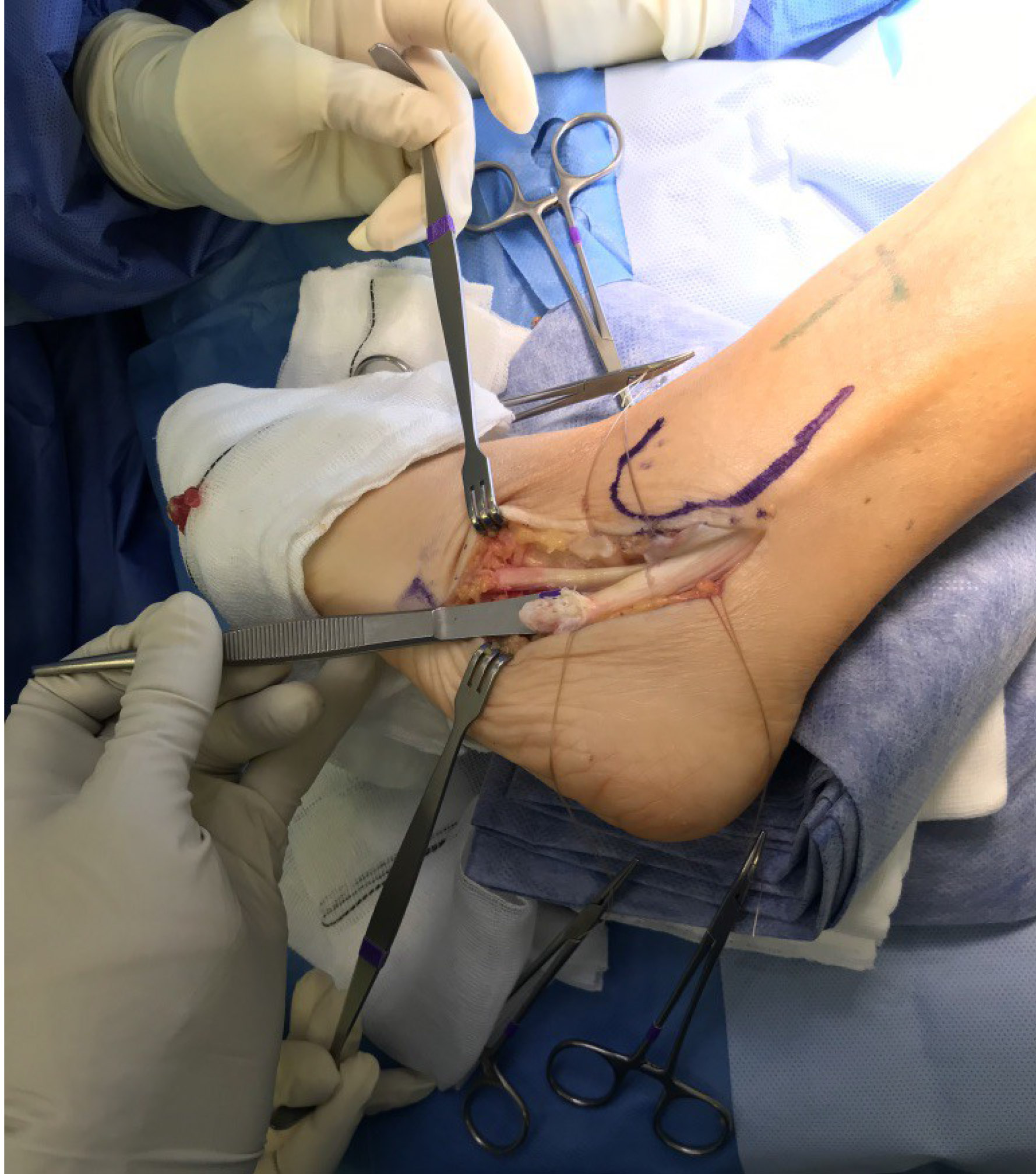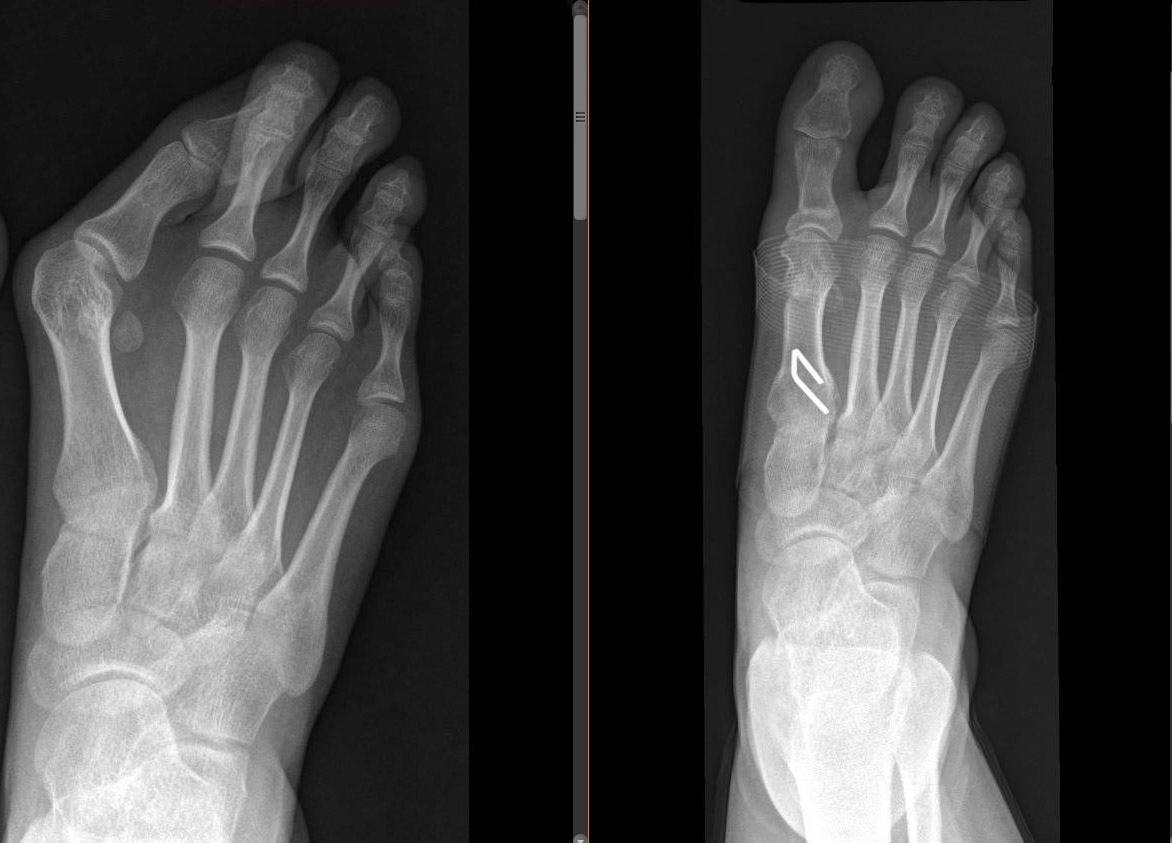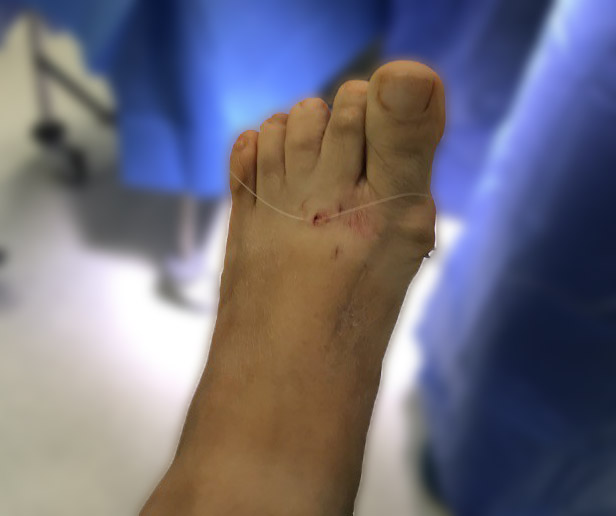One of the most common causes of heel spur is the plantar fasciitis, sometimes linked to the appearance of heel spur, which is a bone development in the support zone of the heel. The causes can be numerous and the treatment is directed towards eliminate this causes when it is possible by losing weight, limiting physical activity and with physical therapy to improve the pain and retractions by stretching the Achilles tendon and the plantar fascia, applying local therapies to relieve pain and shock waves.
If these treatments fail, surgery is recommended and it means releasing the plantar fascia by open or percutaneous surgery and in some occasions, procedures like releasing the internal calf muscle, when required. Percutaneous surgery has the advantage of being conducted by a minimal incision in the heel by which, besides releasing the plantar fascia, it is possible to eliminate the heel spur if there was one. It does not require hospitalisation and it allows to stand early.







